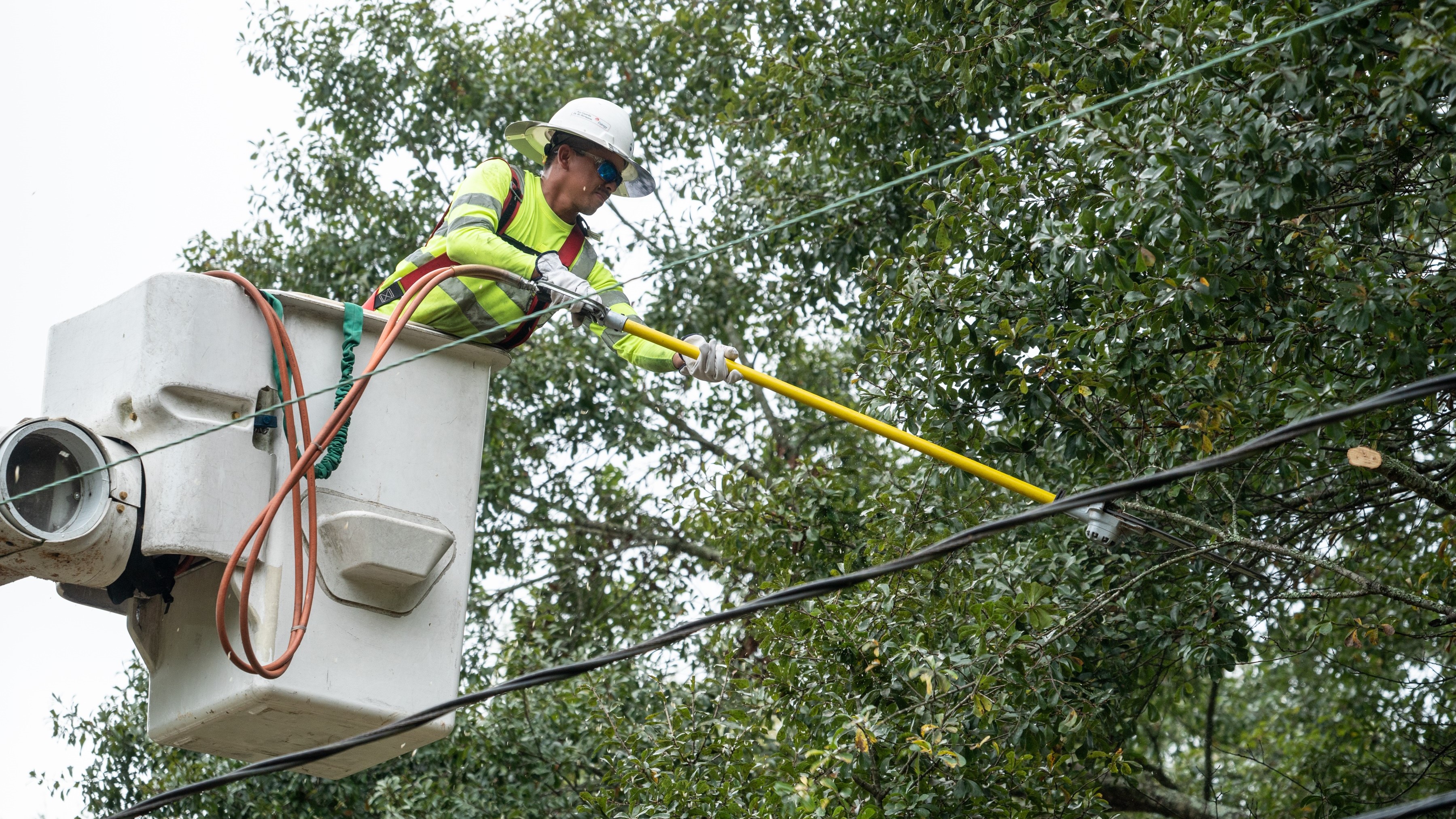Insights > Technology drives vegetation management, so we stay one step ahead of Mother Nature
Technology drives vegetation management, so we stay one step ahead of Mother Nature
06/22/2022

Did you know trees and other vegetation can be a leading cause of power outages? We work year-round to maintain a robust vegetation management program whose sole charge is to protect the electrical lines that deliver power to customers’ homes and businesses from growing plants and trees.
Meet Don Adcock, who oversees Entergy’s vegetation management program. Don’s team manages approximately 92,000 miles of overhead electrical lines. To put that into perspective, the world’s circumference is just under 25,000 miles. That’s three and a half trips around the globe.
“We use different technology, including computer modeling and satellite imagery, to help efficiently manage such a large geographic area that is native to nearly 100 different tree species,” Adcock said. “Spanning more than 94,000 square miles, we see a variety of unique challenges with vegetation. Many trees, for example, are capable of growing to heights that impact our distribution lines.”
Did you know?
- It is common to have trees growing to more than 100 feet tall in our right-of-way corridors, some even reaching as high as 160 feet.
- Fast-growing species, like the black willow tree which can grow six to seven feet each year, are capable of growing from ground level into our lines within just three to four years.
- Seed production is constantly re-populating a new generation of trees to maintain, like the water oak tree which drops about 20,000 acorns per tree, per year.
- Some species’ seeds provide even bigger challenges than additional growth, like the sweetgum tree which produces spiked-ball seed capsules. These seeds easily clog up lawn mowers or worse, become fast-moving projectiles if shot out the side of the mower deck.
- We also have threats like the locust tree, which produces thorns up to eight inches long that can poke holes in tires and go through the soles of shoes when stepped on.
Artificial intelligence helps predict vegetation growth
Our top two sources of vegetation-related power outages are overhanging limbs or trees on the line outside the right-of-way. In 2020, we introduced the use of artificial intelligence to predict vegetation growth on feeders, the main distribution lines used to transmit electricity to customer homes or businesses. The technology considers tree species, growth rates, customer density, environmental conditions, and vegetation clearance from conductors to determine a natural cycle for every feeder across the system and to generate a criticality score for prioritization. This information, combined with field observations, is used to identify which areas are due for trimming in a given year to prevent customer outages due to grow-in and allow the shifting of resources to more impactful areas.
The team also uses satellite imagery to detect the distance, both horizontally and vertically, between our lines and trees to identify areas that need attention. Leveraging historical satellite imagery also allows us to create a growth rate model to predict an optimal trim cycle for each segment along the system. While the technology is complex, the output is quite simple, we trim circuits with faster growth rates more often.
Sustaining landscapes and the health of trees
As part of maintaining an efficient schedule, we trim trees only when necessary and go to extra effort to preserve the health of the trees to the greatest degree possible. To do this, we follow specifications developed by the International Society of Arboriculture. In addition, the Arbor Day Foundation has repeatedly named Entergy a Tree Line USA utility as a result of our commitment to proper tree pruning, planting and care in our service area. Learn more here.
Storm ready
Our year-round storm preparations include the vegetation management program and the targeted “ground to sky” vegetation trimming, which removes tree limbs that would normally have been above the power line. Throughout the year we also maintain minimum standards such that every pole worked on is evaluated for any potential vegetation issues and the problems are resolved.

